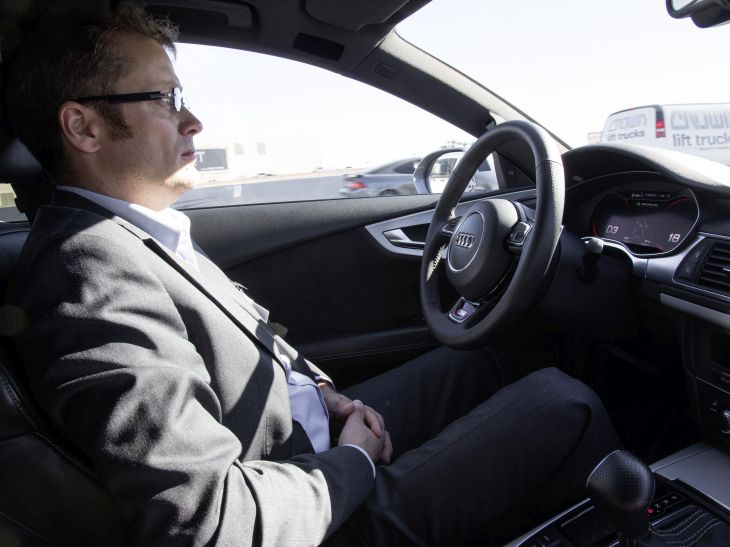The year of the driverless car is not yet here

Rewind to 2009 when I was visiting Professor Alberto Broggi and his team at the University of Parma. Using hours of footage from cameras mounted on the front of cars, they had trained computer systems to recognise kerbs, white lines, parked cars and even pedestrians.
Sitting in the back of his demonstration car, I was concerned to see my driver climb into another car and drive off. What I had not expected was for my car, the driver’s seat still empty, to follow it; steering itself and maintaining perfect distance from the car in front.
Jump to today and it seems I cannot go a week without hearing news on driverless cars. While there is no doubt that the technology has advanced apace in the six years since my memorable driverless journey, I believe that hands-free driving may be further off than some would have us think.
Thanks to the work of Professor Broggi and countless others, computers are getting very good at specific skills, like braking to avoid hitting another car. However, a broader awareness requires intelligence, and humans still outperform artificial systems by a long way.
Experience counts
On encountering a graffiti-covered sign or a broken traffic light, humans can draw on experience as well as intelligence to respond. As yet, machines struggle to deal with this level of uncertainty, and take longer than humans to process the data streams that new surroundings offer.
Which is not to say that I don’t look forward to the day that we see more autonomy in our cars! On long journeys, I cannot imagine many things better than instructing my car to join a convoy so I could take a break, make phone calls, eat, sleep or work.
With a system of autonomous cars, my congested commute could become a thing of the past, as traffic management systems control the speed of my car, its spacing from the cars around it and even the route it takes home, making the whole network more efficient. Anyone can see the appeal.
But currently, the open road is a world too complicated for driverless cars. As such, autonomy is likely to appear first in more controlled situations - perhaps driverless convoys for goods traffic, or small pods for groups of commuters in segregated lanes.
A question of investment
While always in the headlines, the market for autonomous private cars is unlikely to be large enough to unlock the investment needed to create a fully-integrated and regulated transport system. It is far more likely that the commercial benefits for logistics and haulage will be the driving force… pardon the pun!
Looking further forward, a transport network made up of driverless cars will be very different from the road networks we know today and it will take time (and money) to make our roads autonomous vehicle friendly.
And there are other challenges – for example, we do not know very much about how our brains even manage the process of navigation. This has prompted researchers to think more about cognition in order to improve automation, and this is a field in which the Royal Institute of Navigation has taken a particular interest. Understanding this will not only help develop autonomous systems, but also help us tackle issues where human meets machine.
We have all been in the car when the satnav goes crazy. We have all see drivers do crazy things with satnav! Providing systems and information that are free from both human and computer error is not easy. And bigger system issues such as security also need to be addressed.
Watertight security?
Autonomous vehicles will have communications and computer systems, making them prone to hacking. I for one would not feel comfortable entrusting my life or those of my loved ones with a driverless car until the security is absolutely watertight.
It is not just reputations that would be at risk here - the stakes are much higher. Later this month, the Royal Institute of Navigation will bring together many people striving to make driving safer and ease the burden on the driver at the International Navigation Conference – there we will discuss these issues and many more.
The fact is, that while we are getting closer to seeing driverless vehicles but we should not be fooled in to thinking that, because the existing technology is so clever, driverless cars are only a year or so away. Despite its many faults, the existing transport system of individual cars, each with a fallible driver, will be a tough act to follow. And for those who want to eat, read or snooze through the rush hour, there is always the train.

Leave a comment
Alternatively
This will only be used to quickly provide signup information and will not allow us to post to your account or appear on your timeline.